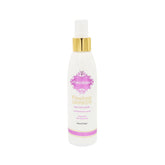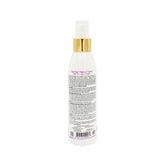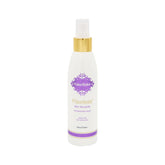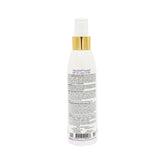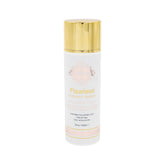How Safe is Self-Tanning?
In terms of health and safety, anyone who decides to use a self-tanner - whether lotion, gel, mousse, liquid or spray - is already light-years ahead of those who tan in the sun or go to tanning beds. Nearly everyone has been educated repeatedly on the danger of the sun's UV rays in causing sunburn, skin damage, accelerated aging and skin cancer. Regarding indoor tanning, the American Academy of Dermatology reports that even one tanning bed or booth session can increase a person's risk of developing melanoma by 20%, basal cell carcinoma by 29% and squamous cell carcinoma by 67%.

The question then becomes, how safe are the tanning alternatives to sun-bathing or tanning beds?
Tanning Pills and Tanning Accelerator
Tanning pills and tanning accelerators are a couple products created for the purpose of obtaining a sunless tan. Medical studies of tanning pills reveal that they contain chemical additives similar to beta-carotene, which is what gives carrots their orange color. The pill ingredients are deposited around the body, particularly in the skin, and turn it an orangish color. The U.S. Food and Drug Administration (FDA) has not approved tanning pill additives for human consumption (although some of the additives have been approved for cosmetics). The main ingredient in most sunless tanning pills, canthaxanthin, can show up as yellow crystals in peoples' eyes, causing possible eye tissue damage and vision impairment. Skin and liver issues have also been correlated to tanning pills.

Tanning accelerators - lotions or pills that contain the amino acid tyrosine - are marketed as a stimulator to your body's own tanning process. However, most studies have shown they don't work. Furthermore, tanning accelerators have not been approved by the FDA, which considers them new drugs not shown to be safe and effective.
Safety of Self-Tanning Formulations
Sunless tanning liquids, lotions, sprays, gels and mousses are approved for effectiveness and safety by the FDA. The main active ingredient of these formulations is a compound called dihydroxyacetone or DHA. But how safe is DHA? Derived from beet or cane sugar, DHA reacts with dead skin cells on the surface of the skin to temporarily darken pigments (the chemical process involved is called the Maillard reaction, the same reaction involved in browning toast or meat). DHA has been approved for use in cosmetics (i.e. external application) by the Federal Food, Drug and Cosmetic Act. This approval does not extend, however, to DHA reaching the body's mucous membranes - inside the mouth, eyes, ears, nose, urethral opening or anus.
Medical questions have been raised about the effect of internal absorption of DHA, which could occur during the use of tanning sprays at tanning salons. If inhaled, tanning spray could potentially be absorbed into the bloodstream through lung tissue. Other possibilities for systemic absorption would be through contact with eyes, the area around the mouth and through broken or very thin skin. According to a 2015 article published in Time magazine, lung exposure to DHA was believed to increase the risk for asthma, chronic obstructive pulmonary disease and cancer.
Another study consideration was the possibility of lotions containing DHA penetrating into the bloodstream through the top layers of the skin. No evidence, however, has been found to support this contention.
Based on current research, and as confirmed through the FDA approval of self-tanning formulations - including sprays - DHA is considered safe when applied to the skin correctly. In the case of sprays, caution should be exercised around the eyes, mouth and broken skin. It should also be kept in mind that at this time, even the risks associated with DHA entering a person's system are considered speculative.
Free Radical Damage and DHA Allergy. One more aspect of fake tan formulations studied was the possibility that they could increase free radical damage. This means that applying DHA could make your skin more prone to UV damage than untreated skin. It was found, however, that using an antioxidant with DHA formulas lowers the potential for oxidation. Another way to minimize the amount of potential oxidation is by applying self-tanners at night and allowing them to develop overnight.
Finally, the question of people being allergic to DHA was raised. As previously discussed, however, it has been reported that only 2 in every 100,000 people are allergic to DHA, and contact dermatitis reactions are more likely to be caused by other ingredients in self-tan formulas (e.g. the bronzing color guide).


Sun Precautions with a Self-Tan (or Without)
Our self-tanning formulations do not contain sunscreen, so it is important to be aware of the basic safety guidelines for sun exposure:
- Avoid being in the direct sun as much as possible, especially when UV rays are the most intense between 10:00 am and 4:00 pm.
- When outdoors, seek shade as much as possible.
- Wear wide-brimmed hats, sunglasses and protective clothing. Tighter-weave, loose-fitting clothes that cover most areas of exposed skin are the most effective in this regard. Also, bright or dark colors reflect more UV radiation than pastels or bleached fabrics.
- Apply sunscreen with a minimum 30 SPF. Sunscreens lose their effectiveness after approximately 2 hours, so make sure to reapply if you're outside longer than that.

The Bottom Line
Considering the above, use of self-tan formulations - lotions, liquids, gels, sprays or mousses - is currently the safest way to achieve a sunless tan when they are applied carefully and as directed. Also, it is essential to remember that self-tanners don't provide UV protection, so everyone should take all the recommended precautions when outside and exposed to the sun.

